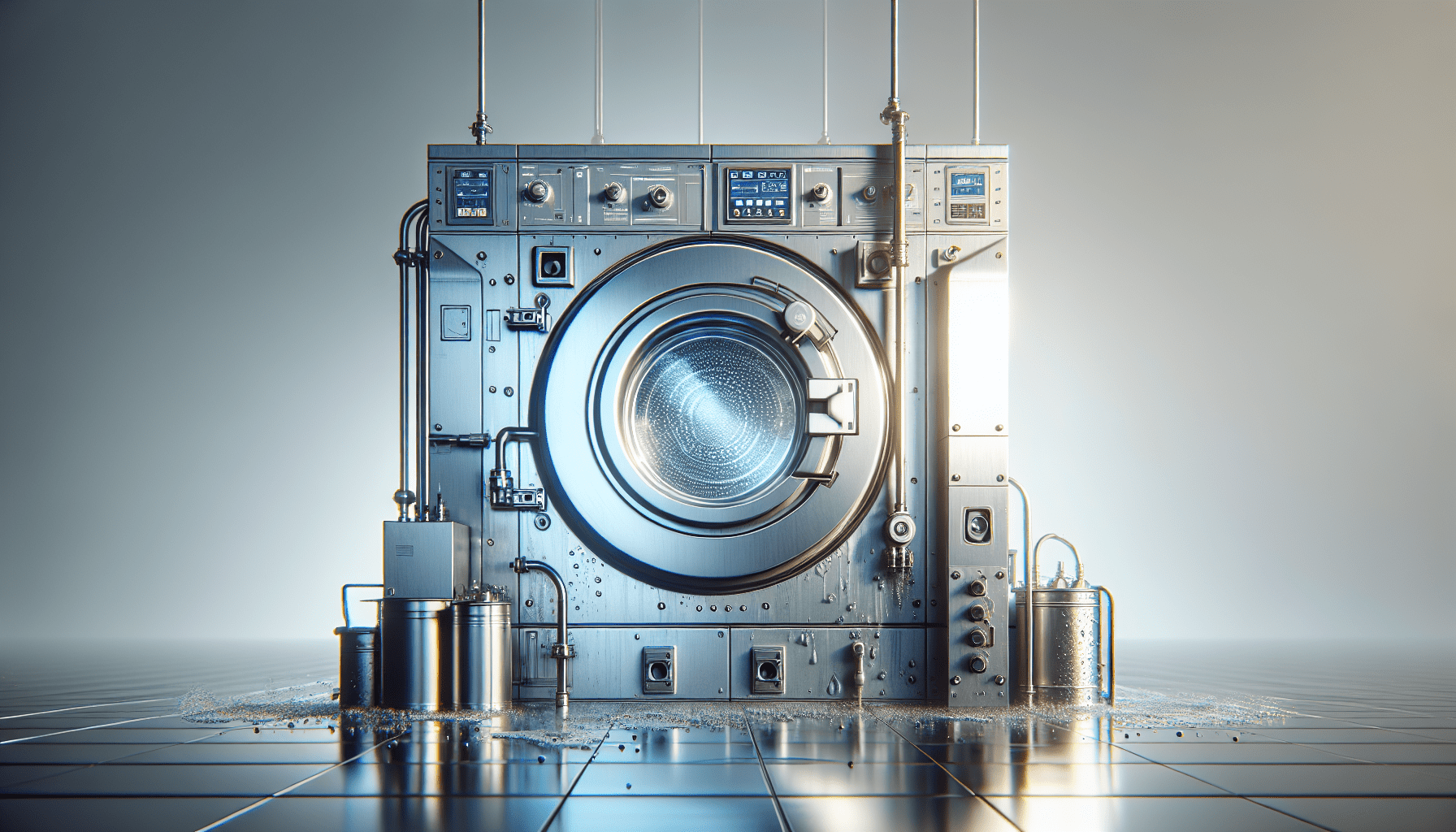Where To File ISF For Washing Equipments
Have you ever wondered where to file an Importer Security Filing (ISF) for washing equipment? If you’re considering importing washing equipment, you’ll find that understanding the process of filing the ISF can save you time and headaches. This guide provides you with all the information you need to ensure your paperwork is in order.

Understanding Importer Security Filing (ISF)
Before diving into the specifics of where and how to file the ISF for washing equipment, let’s first unpack what the ISF is. The ISF, also known as the “10+2 rule,” is a requirement imposed by the U.S. Customs and Border Protection (CBP) that mandates importers to submit documentation before goods are transported to the United States. This filing helps enhance security and mitigate risks associated with importing goods.
Why ISF is Important
You might be asking yourself, “Why should I care about ISF?” The answer is simple: failing to file correctly can lead to significant delays, fines, and even the confiscation of your goods. In some cases, a poorly managed ISF can trigger inspections by the CBP, leading to added costs and shipping delays.
Who Needs to File ISF for Washing Equipment?
If you’re importing washing equipment into the U.S., you are likely the Responsible Party for ISF. This can be your business name, or in some cases, it might be designated to a freight forwarder or customs broker. Understanding your role in the ISF filing process is critical for ensuring compliance.
Importer Responsibilities
As the importer, you are responsible for providing accurate information related to your shipment. Any mistakes could result in penalties or customs delays. It’s vital that you stay organized and ensure your information matches the shipping documents.
How to Gather Information for Your ISF Filing
Having the right information on hand is key for a smooth ISF filing. You should gather the following details:
- Loading Dock Information: Where the equipment will be loaded.
- Manufacturer and Supplier Details: Names and addresses of the entities involved.
- Harmonized Tariff Code: This identifies the specific type of washing equipment.
- Bill of Lading: A document that outlines the type, quantity, and destination of the goods.
- Container Information: Details about the containers that will hold the washing equipment.
Important Information to Collect
To make the ISF filing process smoother, it’s wise to create a checklist of necessary information. Here’s a table that you can reference for what to gather:
| Information Required | Description |
|---|---|
| Importer Registration Number | Your unique number assigned as an importer. |
| Shipping Carrier Details | Carrier name and contact information. |
| Importer Contact Information | Name and phone number of the person responsible. |
| Equipment Description | Detailed information about the washing equipment. |
| Supplier Contact Information | Details of the person or company supplying the goods. |
| Country of Origin | Where the goods are being shipped from. |

Where to File ISF for Washing Equipment
Now that you have gathered the necessary information, let’s dive into where you can file your ISF. There are primarily two options: filing directly with CBP or through a licensed customs broker.
Filing Directly with CBP
You can file the ISF directly via the CBP’s Automated Manifest System (AMS). However, doing this requires that you have the right permissions set up and appropriate software installed, which may be complicated for those new to the process. If you’re familiar with customs regulations and have experience with online filings, this may be a reasonable option.
Through a Licensed Customs Broker
Most importers opt to work with a licensed customs broker since they specialize in managing these types of filings and will ensure compliance with CBP requirements. This route typically makes the process smoother and reduces the risk of errors that could lead to delays. Your broker will handle the electronic submission on your behalf through their own AMS account.
Choosing the Right Customs Broker
When selecting a customs broker, consider their experience with ISF and washing equipment imports. Ask them about their fees and whether they are familiar with the CBP’s 10+2 rule. You want to partner with someone who makes the filing process easier for you, not adds to your workload.
ISF Filing Timelines
Understanding the timeline for ISF filing can help you plan better. Your ISF must be filed at least 24 hours before the cargo is loaded onto the vessel that will transport it to the United States.
What Happens If You Miss the Deadline?
If you miss the deadline, you might face penalties and your cargo could be delayed. The U.S. Customs and Border Protection is quite strict about this. Make sure to file in a timely manner to avoid unnecessary complications.
Common Mistakes When Filing ISF for Washing Equipment
Filing your ISF can be tricky, and there are common mistakes that many importers make. Awareness of these can help you avoid pitfalls.
Mislabeling or Incorrect Product Descriptions
Using incorrect terms or labels for your washing equipment can lead to failed inspections or delays. It’s crucial to check that your descriptions match those used by your supplier and the shipping carrier.
Incorrect Harmonized Tariff Code
A wrong tariff code can affect the duties you need to pay and can lead to scrutiny by customs. Review the Harmonized Tariff Schedule carefully to ensure you’re using the correct code.
Best Practices for ISF Filing
Now that you know some common mistakes, let’s move to some best practices you should adopt.
Maintain Consistent Documentation
Always keep your documentation consistent across all platforms. Ensure that the details on your shipping documents match your ISF and related files. Consistency is key for customs inspections.
Update Your Information Promptly
If there are any changes in your shipment after you’ve filed the ISF, report those changes immediately. This helps you stay compliant and avoids further issues.
Resources for Further Information
If you’re looking to expand your knowledge on ISF filing, there are plenty of resources available.
U.S. Customs and Border Protection Website
The most reliable source for information is the CBP’s official website. They provide detailed guidelines and FAQs about the ISF process.
Industry Organizations
Sometimes, industry organizations such as the National Customs Brokers & Forwarders Association also offer workshops and training programs to help you stay informed about customs and regulations.
Consequences of Poor ISF Management
Ignoring ISF responsibilities can have significant consequences for your business.
Financial Penalties
U.S. Customs can impose fines for non-compliance that could range from $5,000 to $10,000 per shipment, depending on the violation. Imagine how detrimental that could be!
Shipment Delays
Not only can you incur costs, but delays could result in losing business opportunities. Your clients are counting on timely delivery, and delays can damage your reputation.
Conclusion
Knowing where and how to file your ISF for washing equipment can seem daunting. However, by gathering the right information, understanding your responsibilities, and leveraging the expertise of a customs broker, you can navigate the process smoothly.
By staying organized and proactive in your filings, you ensure the timely delivery of your washing equipment while avoiding potential roadblocks along the way. The investment in understanding this process will pay off in smoother imports and better business relations.
So, as you gear up to file your ISF, remember that you’re not just filling out paperwork. You’re ensuring the success of your import venture and keeping your business running seamlessly.
